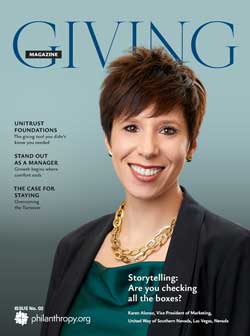I’m happily married. And thank God — I did not enjoy the dating scene. I have a friend (let’s call her “Jamie”), though, who does. She’s online and always looking for the “right” person. (For those who are wondering what this has to do with planned giving… read on.)
I’m sure my friend Jamie will eventually find The One and settle down. In fact, she told me once, “I want to marry a rich guy.”
(Yeah, who doesn’t?)
It got me thinking … What are the chances Jaimie actually could meet and marry a rich man?
What’s “rich?”
First of all, what are we talking about when we say “rich?” What’s the definition of wealth? If we use the worldwide average income, anyone making more than $10,000 a year is rich — even my youngest brother, who’s fresh out of college and working at Applebee’s.
To me, my childhood basketball hero Michael Jordan (worth over a billion) is “rich,” still making $100 million a year as a retiree. But then there’s Bill Gates, who is worth $72 billion. (For some context on all those zeros, a million seconds ago was 2 weeks, a billion seconds ago was 33 years). They say if Bill Gates drops a $100 bill, it’s literally not worth his time to pause to pick it up.
Back to the rich man
Just so we have a starting point for Jaimie, we’ll define “rich” to be the top 1 percent. Now, let’s have some fun with the numbers:
- According to the IRS, the top 1% of taxpayers have an Adjusted Gross Income of $465,626 (TY 2014). So let’s use that as our criteria for Jamie’s “rich” guy: He needs to make at least $465K a year. (As an FYI, our recent survey showed that most people think the top 1% make millions and millions a year. Not so.)
- I couldn’t find data on the gender breakdown for the top 1% of taxpayers, so we’ll just use the national average (51% female, 49% male). So Jamie’s looking at 0.49% of that population as her pool.
- About 80% of men who earn that much are already married. Jamie is not interested in breaking up families, so that brings her options down to 0.1%.
- On the online dating forums, many women check “no bald men” in their criteria. Let’s say Jamie wants a guy with a full head of hair. Her list of options just got trimmed in half again. (Half of the men who are “rich” are also likely to be bald.) Now we’re down to 0.05%.
- Many women prefer tall, “fit” men. But many men — good looking or not, bald or not, rich or not — are short. So let’s estimate Jamie cut her options in half again, if not even more. Now we’re down to 0.025%.
- Jamie lives in Austin, population 900,000. That brings her prospects down to 225 “rich” guys, if that.
I know I’ve oversimplified and exaggerated this, but you get my point. According to this definition of wealth, Jamie’s odds of meeting a rich man to marry are pretty small. Slim to none.
“I want to meet a wealthy donor”
Let’s extend Jamie’s dating example to fundraising. Let’s say Fundraiser Fred wants to meet a wealthy donor.
- Like Jamie, right out of the gate, Fred is starting with a small minority: the top 1% earning at least $465K a year. Doable, right?
- But many of these top earners have debt, including school loans, expensive homes and cars, second homes, etc. So they are not as fluid as we think they are.
- Our recent survey showed that 72% of fundraisers have a blind spot with donors of opposing political beliefs.
- That same survey showed 25% of fundraisers have a blind spot when it comes to talking to donors of “great wealth.”
- There’s a growing number of fundraisers having ethical issues with sources of large wealth and thus rejecting their gifting potential
- And 6% have a blind spot when it comes to dealing with the opposite sex.
You see where I am going with this, right?
Planned giving:
Philanthropy for the rest of us
Meeting a super-rich donor and landing that mega donation is great, no doubt about it. But making that the aim is like buying lottery tickets as your retirement plan. You might get an adrenaline rush, but your chances of payoff are slim to none.
Average folks, with average means, make the best planned giving prospects. No blind spots, no fears, no intimidating meetings—just ordinary people. Lots of them! They’re not in the top 1 percent. They’re not going to fund your entire capital campaign with a stroke of a pen. But they do have some wealth. They have assets.
And most importantly—they want to make a difference.
That’s what is so great about planned giving … It’s simply philanthropy for the rest of us.●
Karen Martin is a writer, not a mathematician or statistician, and she hopes readers will understand she was just playing with numbers in this article to make a point about the definition of wealth. Contact: karen@plannedgiving.com
Categories: Bequests, Planned Giving Marketing



